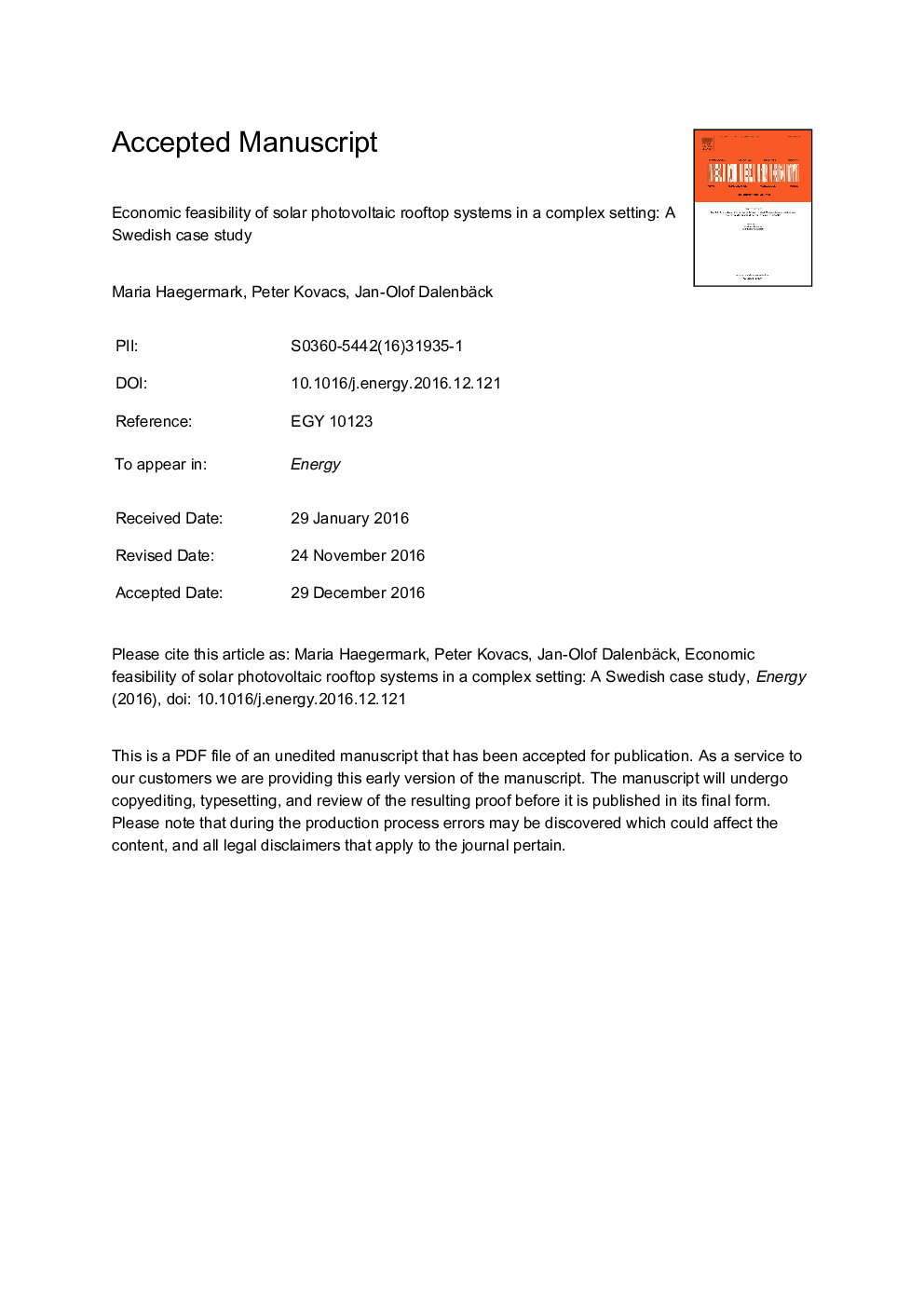| Article ID | Journal | Published Year | Pages | File Type |
|---|---|---|---|---|
| 5476787 | Energy | 2017 | 31 Pages |
Abstract
An economic feasibility study of solar photovoltaic rooftop (PV) systems in Swedish multifamily buildings was carried out to examine the effects of current market conditions, incentive programmes, and building-specific parameters. Economic analyses were conducted for 108 electricity supply points for scenarios including (1) a tax rebate, (2) an investment subsidy, and (3) both tax rebate and subsidy. First, PV systems were sized and oriented to give the highest net present values, considering actual fuse sizes and hourly demands matched to simulated PV generation. This resulted in shares of profitable systems as follows: 33% with a tax rebate, 51% with a subsidy, and 93% with both. It was shown that the tax rebate programme promotes relatively large systems compared to the subsidy, although with a much higher risk. Thereafter, the influences of main fuse size and existing roofs were investigated. Most of the roofs were large enough to fit the previously sized PV systems. However, taking into account the slopes and directions of available rooftops considerably reduced the number of profitable systems. Finally, the study showed that in addition to support measures and other economic conditions, the PV system feasibility was highly sensitive to roof characteristics, electricity demand and fuse size.
Related Topics
Physical Sciences and Engineering
Energy
Energy (General)
Authors
Maria Haegermark, Peter Kovacs, Jan-Olof Dalenbäck,
